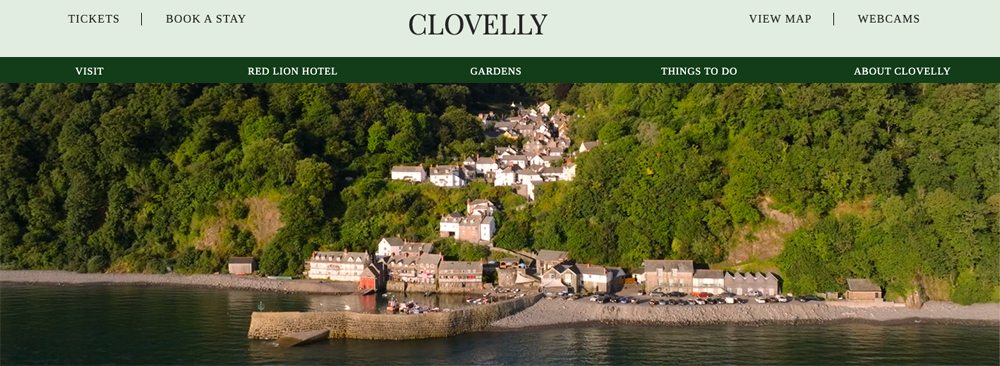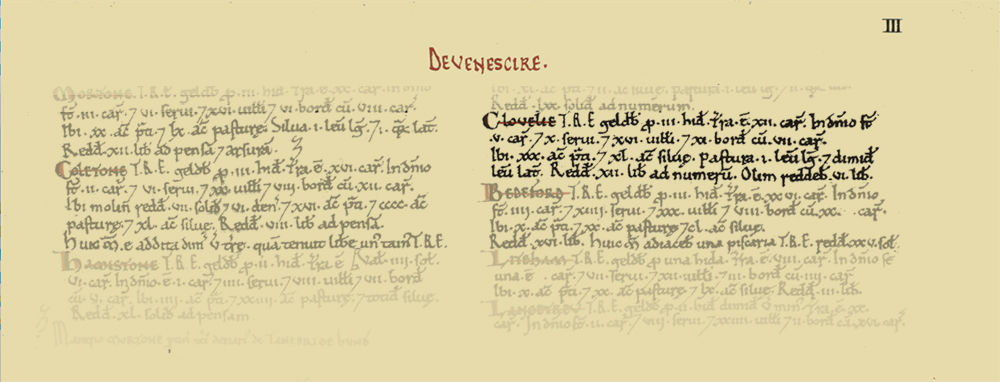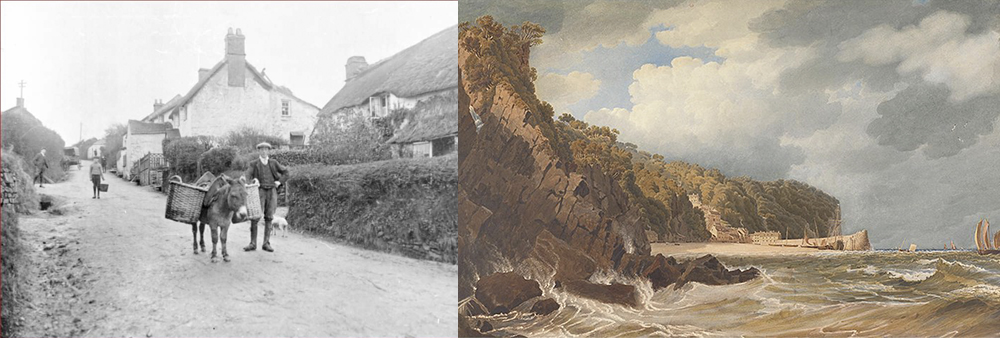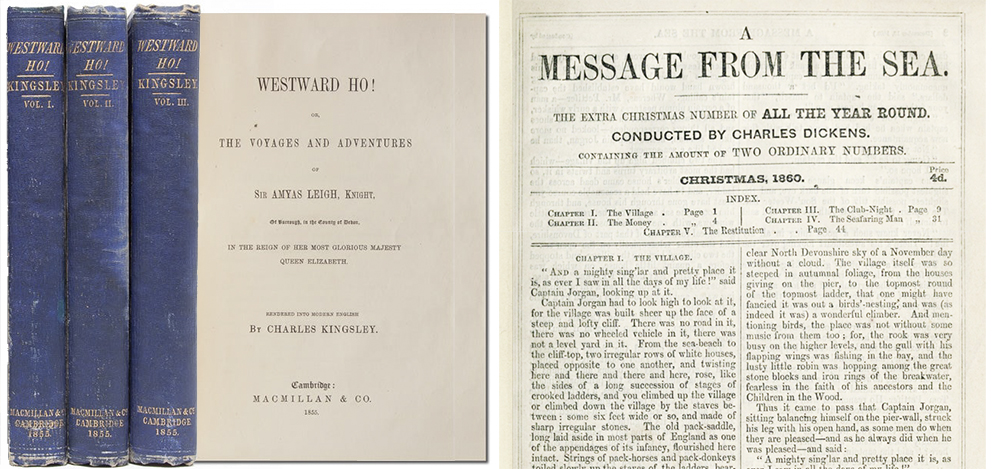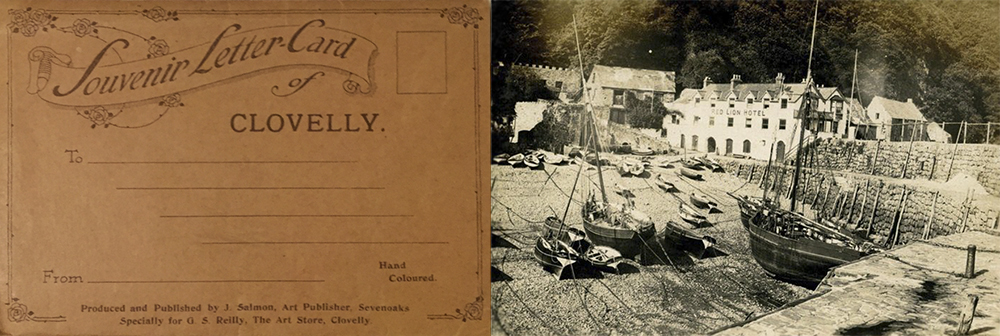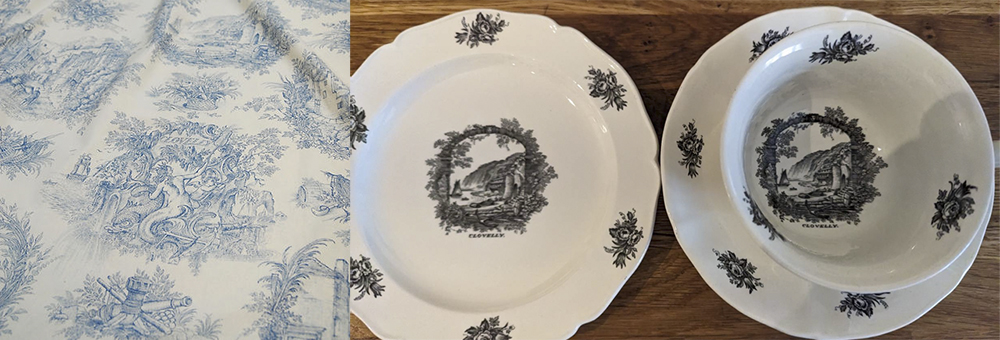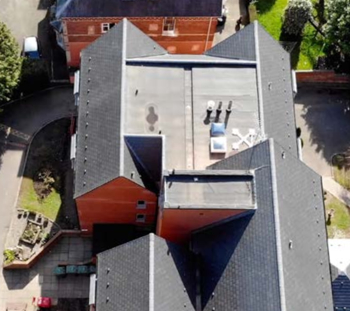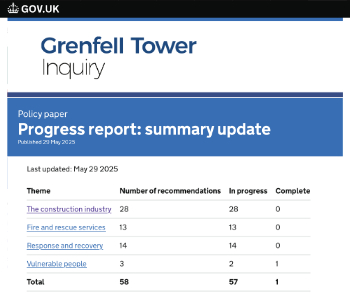Clovelly, a village changing hands and changing with the times
Contents |
[edit] A brief cultural history, changing with the times
For those have not heard of Clovelly, it is a historic fishing village on the North coast of Devon, famous for its steep cobbled stone high street, spectacular views, and special story steeped in English history.
[edit] From the first Queen to a harbour
The area around the village has been inhabited since the Iron Age. After being acquired by William the Conquer, it featured as Clovelie in the Doomsday book of 1085, and was gifted to his wife Matilda of Flanders, who was the first crowned queen of England. On her death and on through the next 200 years the village and land passed through different hands, until during the 14th century reign of Richard II, the indication is that the Manor of Clovelly, an agricultural parish, was bought by the judge Sir John Cary. His younger brother Sir William Cary is said to have built the original stone breakwater, which created a harbour and transformed the site into a much-needed fishing village and stopping point on the North side of the Devon coast.
[edit] From carriageways to Turner painting
The family kept and resided in the village for eleven generations, until the last Cary of Clovelly, Elizabeth Cary died and her widower, Robert Barbour, sold the village to Zachary Hamlyn, a wealthy lawyer from Lincolns Inn in 1738. On his death the village was passed to his nephew, James who, changed his name to Hamlyn, was made a baronet for public services and married Arabella Williams the heiress of a Welsh estate. Their son, also a James, the second Baronet and his wife Diana, used the inheritance to improve the estate, including the construction of a number of carriageways, which were completed in the early 1800’s. It was in 1811 that Joseph Mallord William Turner sketched and then painted a scene from a viewpoint up the coast with Clovelly in the background, which hangs in the National Gallery of Ireland in Dublin.
[edit] From Kingsley to Dickens
The fishing industry in the area had started to decline from around the 1830’s, a time when third Baronet, also James Hamlyn, had three daughters with Mary the daughter of the 1st Earl of Fortescue. Their eldest daughter Susan married Henry Fane of Fulbeck in 1850 and assumed the name Hamlyn Fane. In 1855 Charles Kingsley, who lived in Clovelly as a young man, wrote the historical novel Westward Ho! set in and around the village. Whilst Clovelly is also mentioned in the Christmas issue of All the Year Round from 1860 written by Charles Dickens and Wilkie Collins. ‘ "And a mighty sing'lar and pretty place it is, as ever I saw in all the days of my life!" said Captain Jorgan, looking up at it. Captain Jorgan had to look high to look at it, for the village was built sheer up the face of a steep and lofty cliff. There was no road in it, there was no wheeled vehicle in it, there was not a level yard in it.’
[edit] From renovation to tourism
It was these events, particularly the inclusion of the area and Will Cary of Clovelly in Kingsley’s best-seller that helped the village to become increasingly well-known and an attraction for visitors. In 1870 a disastrous storm killed many fishermen, and destroyed boats, which lead to the construction of its first lifeboat station, which remains today. Shortly after, in 1884 James and Mary’s daughter Christine Hamlyn Fane, was given the estate. On her marriage to Frederick Gosling 5 years later, she insisted on retaining the name and with much of his wealth the two began the long process of restoring and upgrading the village, marking their initials CH or FH and the dates on the buildings as they were completed.
In 1901 the village had a population of 521 and the extensive work had brought the properties and living standards for tenants up to those of the Victorian age and saw the village become a popular attraction for tourists which generated income.
[edit] From Whistler to Wedgewood
In 1932 Christine commissioned the artist Rex Whistler, to design a toile de jouy fabric which was known as the Clovelly pattern and also painted a portrait of her. The pattern was adapted by Wedgwood for use in a range of ceramic tea-wares, again helping to raise the profile of a small village with a cultural draw. As the couple had no children, the village was left to their niece, the daughter of Constance Manners (born Hamlyn Fane), Betty. Betty Asquith married Arthur (the son of Prime Minister Herbert Asquith), with whom she had four daughters. The eldest was Mary, who married Keith Rous and inherited the estate in 1962, upon the death of her mother. Her son John Rous took over the running of the estate 1983. The Hon. John Rous, is the great grand-nephew of Christine Hamlyn and since taking the helm has continued the extraordinary work of not only the upkeep of the village, but also its improvement, much as she had done some 100 years earlier, and also designing a more secure and sustainable mechanism to help fund some of the works.
[edit] Recent steps towards environmental and economic sustainability
[edit] From accountancy to estate management
The Rt Hon John Rous, a trained accountant made a decisive move, perhaps aided by his training, and in many respects one that followed a pattern that started during the Victorian period. He built a modern visitors centre, out of sight of the village and introduced an entrance fee for guests. This was a way to generate the income needed to maintain upkeep and eventually improve the historical buildings, whilst keeping the existing community of tenants in place, and carefully introducing new community members. The visitor centre and the entrance fees were not appreciated by all, and for a time the village suffered bad reviews during what could be considered as a teething period. However, now, sometime later, one might say that the village (rather than just Mr Rous himself) is seeing the fruits of his labour. Not only is the village looking better than it has for some time but in 2021 the estate completed a massive and ground-breaking programme to insulate the 100 buildings of the village over 5 years. This programme had the foresight to pre-empt the energy crisis which started in the August of the projects completion, helping most residents reduce energy bills, buffering the impacts of the rise in energy process, and at the same time improving comfort levels.
[edit] From sledges to savings
Clovelly’s cobbled street is famous to its tourists, infamous to its tradesmen. There is no vehicular access to the village, so residents transport shopping using sledges, and as such the same was to be for the team of skilled crafts people who set about the retrofit program. The challenge for listed property experts Mitchell & Dickinson was huge, to bring 107 17th-century buildings up to modern insulation standards and reduce energy bills while preserving their character and beauty, with access via a steep cobbled street. The solution lay in part with a new system developed by the company that saw the grade two listed buildings upgraded with one vacant building used as a workshop.
The work involved fitting sheep's wool loft insulation, bespoke draughtproofing and the unique secondary glazing system (using plexiglass and magnetic tape) called CosyGlazing. This allowed the installation of almost invisible secondary glazing onto existing windows, and quietly revolutionised the conservation of timber and glass windows in listed buildings. The team were clear also of other hurdles and approached the project with early adopters who helped progress the work by word of mouth and recommendation to others who were less convinced. One early adopter reported her heating costs were reduced from £2,400 per annum to £1,200. She said: “Not only am I saving 50 per cent of my fuel bills, but my home is far warmer. I used to run the Rayburn on ‘roast’ all winter, now it runs on ‘simmer’. I used to have an electric heater on for three hours every evening in my baby’s bedroom ,yet last winter I didn’t use it once. Anyone would be mad not to have their home insulated.” (reference Return to Clovelly Listed village retrofitted for the future by Mitchell and Dickenson).
[edit] More than building works
This article was intended as a winter publication primarily to describe the immense work of the insulation and secondary glazing programme. However, after visiting the village, discussing the current project, its approach and the supporting initiatives, in the historical context, a much broader significant cultural as well as technical story appears.
Firstly, culturally as we can see Clovelly is a rather particular and unique place and there is no doubt that it takes a certain type of tenant to want to live in the village, and indeed vice versa. Mr Rous I am told knows all the tenants and normally speaks to them all personally before anyone new moves in. This shows a particular and engaged culture of rental. So much so that in 2022 Clovelly Estate Company won the award for National Landlord of the Year at the Energy Efficiency Awards in 2022, a village now thought to be Britain’s most energy-efficient heritage village.
This engaged approach both during and after the renovation works is perhaps a key aspect to the success of the project, over and above the works themselves. In a construction culture that has been slowly changing to incorporate Post Occupancy Evaluations, perhaps there are lessons to be taken from Clovelly that could be applied to retrofit programmes needed across the UK housing stock.
[edit] New solutions bring new issues
It is relatively well known that historical buildings themselves require specific use patterns and accustomed users. Prone to cold spots and draughts many living in these types of houses attribute it to the quirkiness of living in an old building, but these also do provide some form of ventilation, albeit hap hazard. Whilst retrofit and upgrades can improve efficiency by improving air tightness, insulation and leakage rates, this combined with modern living standards can introduce new issues to be aware of.
As the envelope of historical buildings becomes tighter and facilities inside those buildings improve, the occupants themselves and their activities generate higher levels of moisture, through cooking, washing, cleaning and so on. In mechanically ventilation super air-tight buildings such as a Passivhaus much of this moisture can be dealt with in the continual heat recovery ventilation system. In naturally ventilation older houses, purging that moisture via windows and vents relies on the behaviour of occupants. In retrofitted historical buildings with improved envelope performance the issues of moisture build up can be compounded unless managed correctly. Whilst there is no way to assure occupants ventilate tenanted houses correctly, the Clovelly estate went further in supporting their tenants with guidance on the build-up of moisture in such dwellings.
--Editor 11:16, 30 Nov 2024 (BST)
[edit] Related articles on Designing Buildings
- Are works to listed buildings demolition or alteration?
- Building Preservation Notice.
- Certificate of immunity.
- Certificate of Lawfulness of Proposed Works.
- Charging for Listed Building Consent pre-application advice.
- Clovelly.
- Compulsory purchase orders for listed buildings.
- Conservation area.
- Conservation officer.
- Enterprise and Regulatory Reform Act 2013 and listed buildings.
- Fitness for purpose in listing considerations.
- Forced entry to listed buildings.
- Guidance on Alterations to Listed Buildings.
- Heritage partnership agreement.
- Listed buildings.
- Listed buildings insurance.
- Local Listed Building Consent Orders.
- Local interest list.
- Locally listed building.
- Minimalist listing.
- Negotiating listed building consent.
- Planning (Listed Buildings and Conservation Areas) Act.
- Reactive listing.
- The history of listed buildings.
- Thematic listing.
- Town and Country Planning Act 1968.
- Use of direct action in heritage enforcement cases in England.
[edit] External links
Click on images for image references.
https://www.clovelly.co.uk/history/
https://opendomesday.org/place/SS3124/clovelly/
https://mitchellanddickinson.co.uk/landlords-and-estates/clovelly-case-study/
Featured articles and news
Key points for construction at a glance with industry reactions.
Functionality, visibility and sustainability
The simpler approach to specification.
Architects, architecture, buildings, and inspiration in film
The close ties between makers and the movies, with our long list of suggested viewing.
SELECT three-point plan for action issued to MSPs
Call for Scottish regulation, green skills and recognition of electrotechnical industry as part of a manifesto for Scottish Parliamentary elections.
UCEM becomes the University of the Built Environment
Major milestone in its 106-year history, follows recent merger with London School of Architecture (LSE).
Professional practical experience for Architects in training
The long process to transform the nature of education and professional practical experience in the Architecture profession following recent reports.
A people-first approach to retrofit
Moving away from the destructive paradigm of fabric-first.
International Electrician Day, 10 June 2025
Celebrating the role of electrical engineers from André-Marie Amperè, today and for the future.
New guide for clients launched at Houses of Parliament
'There has never been a more important time for clients to step up and ...ask the right questions'
The impact of recycled slate tiles
Innovation across the decades.
EPC changes for existing buildings
Changes and their context as the new RdSAP methodology comes into use from 15 June.
Skills England publishes Sector skills needs assessments
Priority areas relating to the built environment highlighted and described in brief.
BSRIA HVAC Market Watch - May 2025 Edition
Heat Pump Market Outlook: Policy, Performance & Refrigerant Trends for 2025–2028.
Committing to EDI in construction with CIOB
Built Environment professional bodies deepen commitment to EDI with two new signatories: CIAT and CICES.
Government Grenfell progress report at a glance
Line by line recomendation overview, with links to more details.
An engaging and lively review of his professional life.
Sustainable heating for listed buildings
A problem that needs to be approached intelligently.
50th Golden anniversary ECA Edmundson apprentice award
Deadline for entries has been extended to Friday 27 June, so don't miss out!
CIAT at the London Festival of Architecture
Designing for Everyone: Breaking Barriers in Inclusive Architecture.
Mixed reactions to apprenticeship and skills reform 2025
A 'welcome shift' for some and a 'backwards step' for others.








